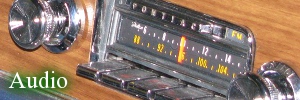















Kenyan Traffic Grows as Drivers' Patience Shrinks |
|---|


|
Alisha Ryu
June 29, 2006
Nairobi, Kenya
Audio Version 459KB RealPlayer
Since being founded by the British in 1899 as a supply depot for the Uganda Railway, the Kenyan city of Nairobi has grown to be one of the largest in Africa, with the highest urban population in East Africa. The city's infrastructure has failed to keep pace with the rapid growth, resulting in some of the worst traffic on the continent.
Clutching the wheel of his small, white Toyota, Nairobi taxi driver Bernard Otieno puts the car into neutral and looks despairingly at the sea of red brake lights in front of him.
"I am very annoyed since I am going somewhere and I am supposed to be there in like 30 minutes and I am not moving," he complained. "You cannot maneuver your way to other parts because even those sites are jammed packed."
A huge container truck idles next to Otieno's car, occasionally belching out a cloud of choking black smoke. Behind him, drivers of Nairobi's notorious public transport minibuses, called matatus, are aggressively trying to cut through the gridlock.
Alternately racing along dirt shoulders and forcing their vehicles back into traffic when they run out of space to maneuver, some Nairobi drivers complain that, more often than not, matatus cause accidents, which create some of the worst traffic problems in the city.
"The jam is brought by personal cars. Everywhere, you see people buying vehicles," says Wicliffe Mola, matatu driver.
City officials estimate that the number of private cars registered in Nairobi has tripled in the past five years to nearly one million.
They say this is mostly due to banking reforms, which have allowed residents to get loans more easily. Faced with the choice of climbing into a dangerous matatu or taking a bus that serves only a limited area, many people have not hesitated to use the loans to purchase cars.
The major arteries feeding traffic in and out of downtown Nairobi are single-lane roads and they split off at different junctions by the way of roundabouts, which separate incoming and outgoing traffic.
But while roundabouts are generally considered safer than traditional intersections because they force drivers to slow down to enter the roundabouts, they are ill-suited to handle high-volume traffic.
If an accident or a vehicle breakdown occurs in one direction, as it frequently happens during rush hour in Nairobi, it quickly blocks the roundabout and the backup spreads to all other roads. Traffic throughout the city often comes to a standstill until the source of the traffic jam can be cleared off the road.
A member of Nairobi's Chamber of Commerce, Joseph Wanjau, adds that some major roads are also plagued by potholes, which cause trucks and cars to slow down to a crawl in certain parts of the city.
Wanjau says he has seen little effort by the government or by city planners to adequately maintain, let alone upgrade, the road system, which has essentially remained unchanged for nearly three decades.
"Last week, I asked for a copy of the strategic planning for Nairobi and I was told the one which was there was the one there in 1978," he said. "So, we are operating without a plan. The government is not investing sufficiently in the infrastructure in Nairobi."
Kenya's Assistant Transportation Minister, Njeru Githae, insists the government of President Mwai Kibaki has a plan for alleviating Nairobi's traffic woes.
"We are building by-passes around the city and construction has already started on some by-passes," he said. "We want to do away with roundabouts. We want to have flyovers. We want to have bridges. We want to have underground passes."
But the four-year-old Kibaki government is embroiled in a series of high-level corruption scandals and facing donor backlash. No one is quite sure where it will find the money to fund such large-scale construction projects.
For now, the only things drivers in Nairobi can do is exercise patience and to invest in good car radios.
